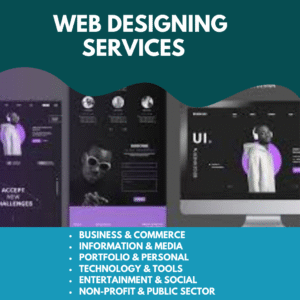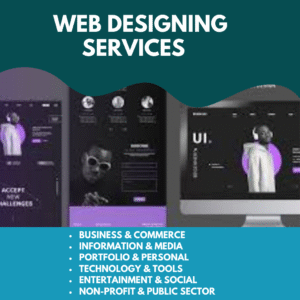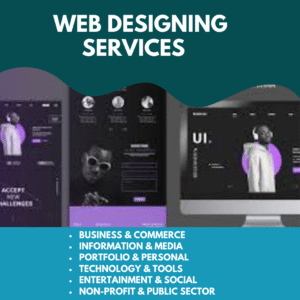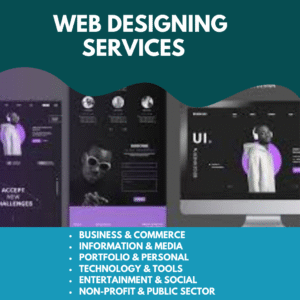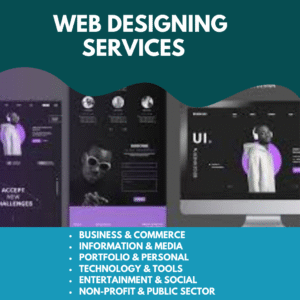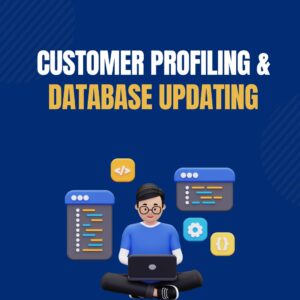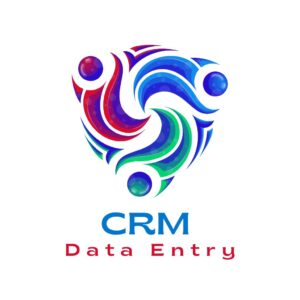Customer Profiling & Database Updating: Unlocking Insights for Smarter Business Growth
Introduction: The Power of Knowing Your Customer
In today’s competitive market, understanding your customers is more than just a strategy — it’s a necessity. Businesses thrive when they have deep insights into who their customers are, what they need, and how they behave. This is where Customer Profiling and Database Updating come into play.
Accurate customer profiles paired with regularly updated databases provide actionable intelligence, allowing businesses to make informed decisions, tailor marketing campaigns, and deliver personalized experiences.
This article explores the importance, benefits, strategies, and best practices for customer profiling and database updating, showing how these processes enhance efficiency, engagement, and growth.
1. What is Customer Profiling?
Customer profiling is the practice of collecting, analyzing, and organizing data about your customers to create detailed profiles that reflect their characteristics, behaviors, preferences, and needs. A well-structured customer profile typically includes:
-
Personal information (name, age, contact details)
-
Demographics (location, gender, income level)
-
Purchase history and buying patterns
-
Interests and preferences
-
Feedback, complaints, and satisfaction ratings
-
Communication preferences
Profiling allows businesses to understand their audience deeply, ensuring that every marketing message, product offering, or interaction is relevant and impactful.
2. Why Customer Profiling Matters
The success of modern businesses depends on personalization and customer-centric strategies. Without accurate profiles, marketing campaigns may miss the mark, sales efforts may be inefficient, and customer engagement can suffer.
Key reasons why profiling is crucial:
-
Enhances Personalization: Tailor products, services, and communication to individual needs.
-
Improves Customer Retention: Understand pain points and proactively address concerns.
-
Increases Conversion Rates: Target the right audience with the right offers.
-
Informs Product Development: Identify trends and gaps in customer needs.
-
Optimizes Marketing Spend: Focus resources on high-value customer segments.
3. The Role of Database Updating
A customer database is only as valuable as its accuracy and relevance. Database updating involves keeping customer information current, verifying details, and removing duplicates or outdated entries.
Benefits of regular database updating include:
-
Reduced Errors: Minimize mistakes that can lead to failed communication or lost opportunities.
-
Efficient Segmentation: Accurate data enables precise segmentation for targeted campaigns.
-
Enhanced Customer Trust: Up-to-date records ensure smooth interactions and customer satisfaction.
-
Actionable Insights: Reliable data allows for effective analytics and reporting.
-
Operational Efficiency: Teams spend less time correcting errors and more time on growth activities.
4. Steps for Effective Customer Profiling
Creating meaningful customer profiles requires a structured approach:
a) Define Objectives
Determine why you are profiling customers — whether it’s for marketing, sales, service improvement, or product development.
b) Collect Data
Gather information from multiple sources, including CRM systems, purchase histories, surveys, social media, and web analytics.
c) Segment Customers
Group customers by demographics, behavior, value, or preferences to identify patterns and trends.
d) Analyze Data
Use analytics tools to uncover insights, identify high-value customers, and predict future behavior.
e) Create Profiles
Develop comprehensive profiles that are clear, actionable, and regularly updated.
5. Best Practices for Database Updating
A well-maintained database ensures the success of customer profiling and marketing campaigns. Follow these practices:
a) Implement Standardized Data Entry
Consistency in formatting and categorization reduces errors.
b) Schedule Regular Updates
Periodic reviews prevent outdated or duplicated records.
c) Validate Information
Cross-check details for accuracy, using tools or verification services when needed.
d) Segment for Efficiency
Organize the database to reflect key customer groups for better targeting.
e) Secure Sensitive Data
Ensure compliance with data privacy regulations like GDPR or CCPA.
f) Leverage Technology
Use CRM platforms and automation tools to streamline updates and reduce manual errors.
6. Tools and Technologies for Profiling and Updating
Modern businesses leverage technology to simplify and optimize customer profiling and database updating:
-
CRM Platforms: Salesforce, HubSpot, Zoho CRM for centralized customer information.
-
Data Cleaning Tools: Dedupely, WinPure, Data Ladder for removing duplicates and correcting errors.
-
Analytics Tools: Power BI, Tableau, Google Analytics for customer insights.
-
Automation Platforms: Zapier, Integromat to integrate multiple data sources.
-
Survey and Feedback Tools: Typeform, SurveyMonkey to capture additional customer preferences.
7. Challenges in Customer Profiling and Database Management
Even with best practices, businesses may face hurdles:
-
Incomplete Data: Missing details can hinder profiling efforts.
-
Data Decay: Customer information changes over time, requiring constant updates.
-
Integration Issues: Disparate systems may create fragmented data.
-
Human Error: Manual entry increases the risk of inaccuracies.
-
Privacy Concerns: Handling sensitive information requires compliance and trust.
Mitigating these challenges requires process discipline, regular audits, and the use of advanced technology.
8. Benefits of Combining Profiling and Updating
When customer profiling and database updating work together, businesses gain:
-
Accurate Customer Insights: Decisions are based on reliable and actionable data.
-
Enhanced Personalization: Marketing and service efforts are tailored to individual needs.
-
Improved ROI: Targeted campaigns maximize returns on marketing spend.
-
Efficient Operations: Teams access accurate data without manual corrections.
-
Stronger Customer Relationships: Engaged customers are more likely to become loyal advocates.
9. Future Trends in Customer Profiling and Database Management
The future of profiling and database management is data-driven, automated, and AI-enhanced:
-
AI & Predictive Analytics: Anticipate customer behavior and preferences.
-
Real-Time Updates: Automatic syncing across platforms for up-to-date data.
-
Enhanced Personalization: Machine learning models optimize communication and offers.
-
Data Security Innovations: Improved encryption and compliance standards.
-
Omnichannel Integration: Consolidate customer interactions across multiple touchpoints for holistic profiles.
10. Final Thoughts
Customer Profiling and Database Updating are critical components of a successful business strategy. Accurate, comprehensive, and regularly updated data allows organizations to understand their customers, anticipate needs, and deliver personalized experiences.
By leveraging structured processes, technology, and best practices, businesses can transform raw data into actionable intelligence, driving sales growth, customer loyalty, and operational efficiency.
#CustomerProfiling #DatabaseUpdating #CRMManagement #DataDrivenDecisions #CustomerInsights #BusinessEfficiency #AccurateCustomerData
